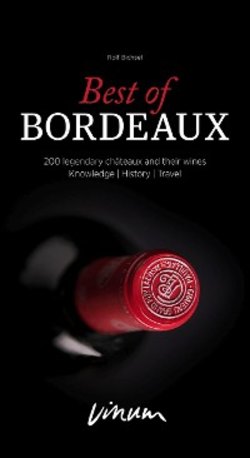Читать книгу Best of Bordeaux - Rolf Bichsel - Страница 42
Оглавление42
with Bordeaux on the Lord's behalf. If the flyers advertising special offers and
premium-price cellar clearances which land in our mailboxes at times of crisis
are anything to go by, there is no shortage of great Bordeaux.
Profit calculations
Contrary to popular belief, there is no real correlation between wine quality
and selling price in Bordeaux. ‘Année vert, année cher', the elderly can be heard
to say: the less there is available, the more expensive the wine becomes. Bor-
deaux is a prime example of the law of supply and demand, and thus a strong-
hold of assets. The fact that Engels was a fan of Margaux (as claimed by Karl
Marx's daughter) is a peculiar irony in the history of winemaking, as speculation
with great Bordeaux does pay off: anyone who has gambled with skill over the
past 20 years will have pocketed healthy profits. Running a Grand Cru is there-
fore a rewarding enterprise – to a varying extent. Over the past hundred years,
the average value created by actual winemaking (including on top estates) has
been a meagre five to eight per cent. Grand Crus are monuments of wine his-
tory, so everything looks better if we examine the ‘valeur vénale', or estate value,
which (depending on the time of the purchase) can increase by up to 1,000%
not including investment, sometimes causing inheritance taxes to rocket and
also creating high levels of debt if inheritances are divided up. However, for
those who bought and sold at the wrong time it can also mean a -50% loss.
Nevertheless, if considered over the past twenty years, the top estates are true
treasure troves. Translated into bottle terms, no one in Bordeaux can produce
wines for less than 1.5 euros per bottle, and top quality for less than 5 euros is
an illusion. However, nowhere do production costs rise much above 20 euros,
which allows fortunate producers to gild many taps, employ many gardeners,
dig many pools, sponsor many artists and much more: in terms of the prices cur-
rently being applied (and depending on their level of debt, as mentioned above),
in good years this means profits of 50% or more. But remember, this only ap-
plies to the top 20 or 30 most famous estates – wineries in the 40th to 500th
positions have similarly high production costs but invest considerably more in
marketing and sales whilst having to sell their wines at significantly reduced
margins. As in most other high-quality wine regions, the widest range of per-
fectly respectable wines in Bordeaux from a quality perspective can be found at
between 20 and 40 euros. Depending on the expenditure incurred, profits in the
red wine sector range from moderate to good, but can start plummet in a flash
when loans take their toll, crisis looms on the global market and the tax authori-
ties are at the door. The situation is equally fraught at the other end of the scale:
the 500th to 1,000th positions are occupied by wines whose style has nothing
in common with the Grand Crus but which are still called Bordeaux, and whose
History The theatre of aging
